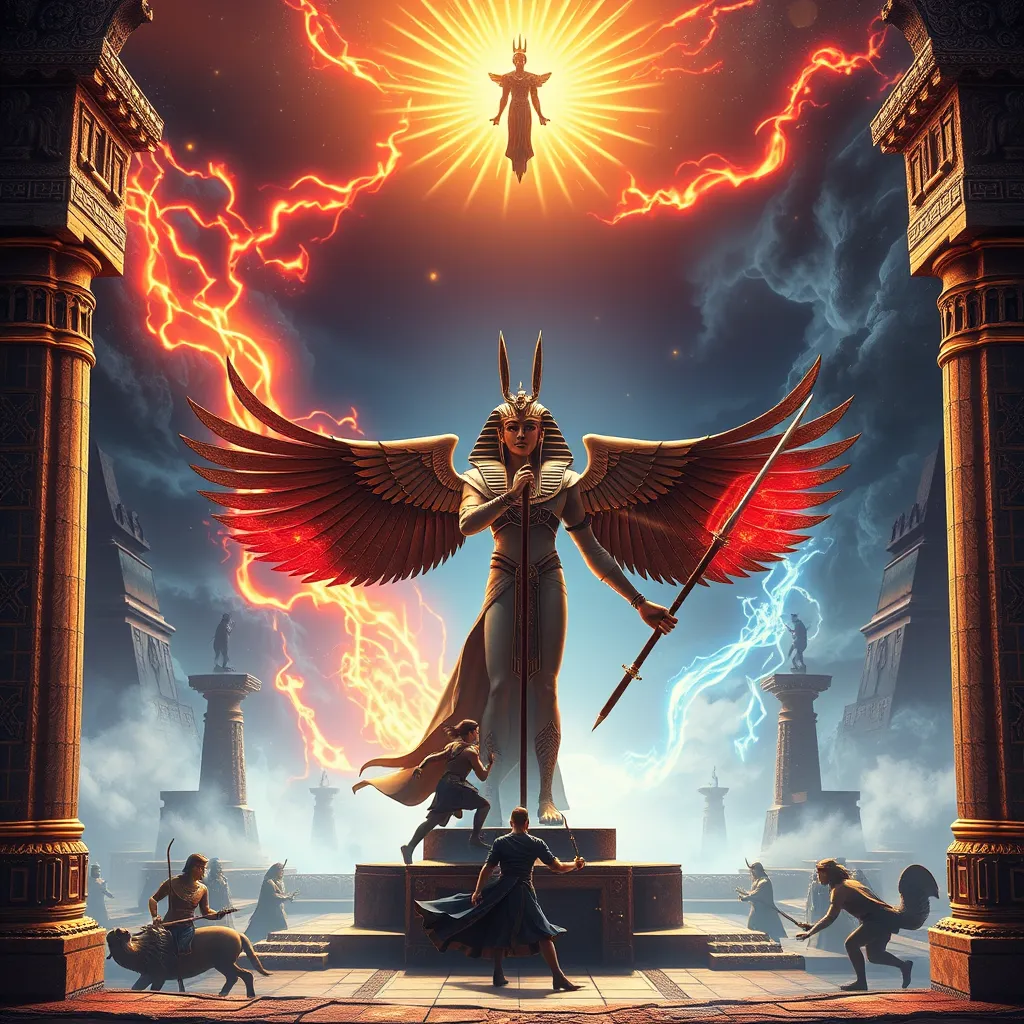The Triumph of Order: The Battle Against Chaos and the Forces of Evil
I. Introduction
Order and chaos are two fundamental forces that shape human societies. Order can be defined as the structured organization of individuals and systems that create predictability and stability, while chaos represents disorder, randomness, and unpredictability. This dichotomy is not merely philosophical but has deep historical significance as it embodies the eternal struggle between good and evil.
Throughout history, societies have faced challenges that test their resilience against chaos and malevolent forces. This article will explore the triumph of order over chaos, examining its importance in creating a stable, just, and thriving society.
II. The Nature of Chaos
Chaos is characterized by a lack of structure and an overwhelming sense of unpredictability. It can manifest in various forms, including:
- Social unrest and riots
- Economic collapse
- Natural disasters
- Political instability
The psychological and societal impacts of chaotic forces can be profound. Individuals may experience anxiety, fear, and a sense of helplessness. Societal breakdowns often occur as trust erodes and communities fracture under the weight of uncertainty.
Historically, chaos has led to significant societal breakdowns. For example, the fall of the Roman Empire exemplified how internal chaos, including political corruption and economic decline, can lead to the disintegration of a once-thriving civilization.
III. The Forces of Evil
Evil, in a societal context, can be identified as actions, ideologies, or entities that actively seek to undermine order and promote chaos. This can include:
- Dictatorships and oppressive regimes
- Criminal organizations
- Acts of terrorism
- Corruption within governments and institutions
Both historical and contemporary examples illustrate the presence of malevolent forces. The rise of Nazism in Germany serves as a stark reminder of how evil can manipulate societal chaos for destructive ends. Similarly, modern-day terrorism shows how such forces perpetuate chaos and fear.
IV. The Importance of Order
Order is defined by its structured and predictable nature. Key characteristics of order include:
- Rule of law
- Social cohesion
- Economic stability
- Predictability in governance
The benefits of a structured and orderly society are numerous. It fosters trust, encourages cooperation, and allows for the prosperity of communities. Historical examples, such as the establishment of democratic governments after tumultuous revolutions, illustrate how order can lead to societal stability.
V. The Struggle for Order: Key Battles and Movements
Throughout history, there have been iconic battles against chaos and evil that have defined nations. For instance:
- The American Civil War, which sought to restore order and moral justice regarding slavery.
- The fight against apartheid in South Africa, led by figures like Nelson Mandela, was a profound struggle for order and equality.
Social movements have also played a crucial role in promoting order and justice. The civil rights movement in the United States sought to dismantle systemic racism and restore order to a society fractured by discrimination.
Leadership is vital in these struggles. Visionary leaders can inspire movements and galvanize communities towards restoring order and justice.
VI. Philosophical Perspectives on Order and Chaos
Philosophical theories have long examined the interplay between order and chaos. Thinkers like Aristotle believed in a natural order to the universe, while others, such as Friedrich Nietzsche, challenged conventional ideas of morality and order.
Key philosophers offered diverse views on the nature of good and evil, from Plato’s ideal forms to Machiavelli’s pragmatic approaches to power. These philosophies remain relevant today as societies grapple with moral dilemmas and the quest for order amidst chaos.
VII. Modern-Day Challenges to Order
In the contemporary world, chaos and evil manifest in various forms, including:
- Political polarization
- Social media misinformation
- Environmental crises and climate change
The impact of technology and social media has revolutionized how chaos spreads, making it easier for misinformation and divisive ideologies to proliferate. This necessitates new strategies for combating chaos, such as:
- Promoting digital literacy and critical thinking
- Encouraging community engagement and dialogue
- Strengthening democratic institutions and practices
VIII. Conclusion
Maintaining order against chaos is crucial for the development and sustainability of any society. The ongoing struggle between these forces is a reminder of our responsibility to promote justice, equity, and stability. As individuals and communities, we must engage in actions that foster order and counter the forces of chaos and evil.
In envisioning a harmonious future, it is imperative to embrace the principles of order, ensuring that society works collectively towards the common good and upholding the values that contribute to a thriving community.




